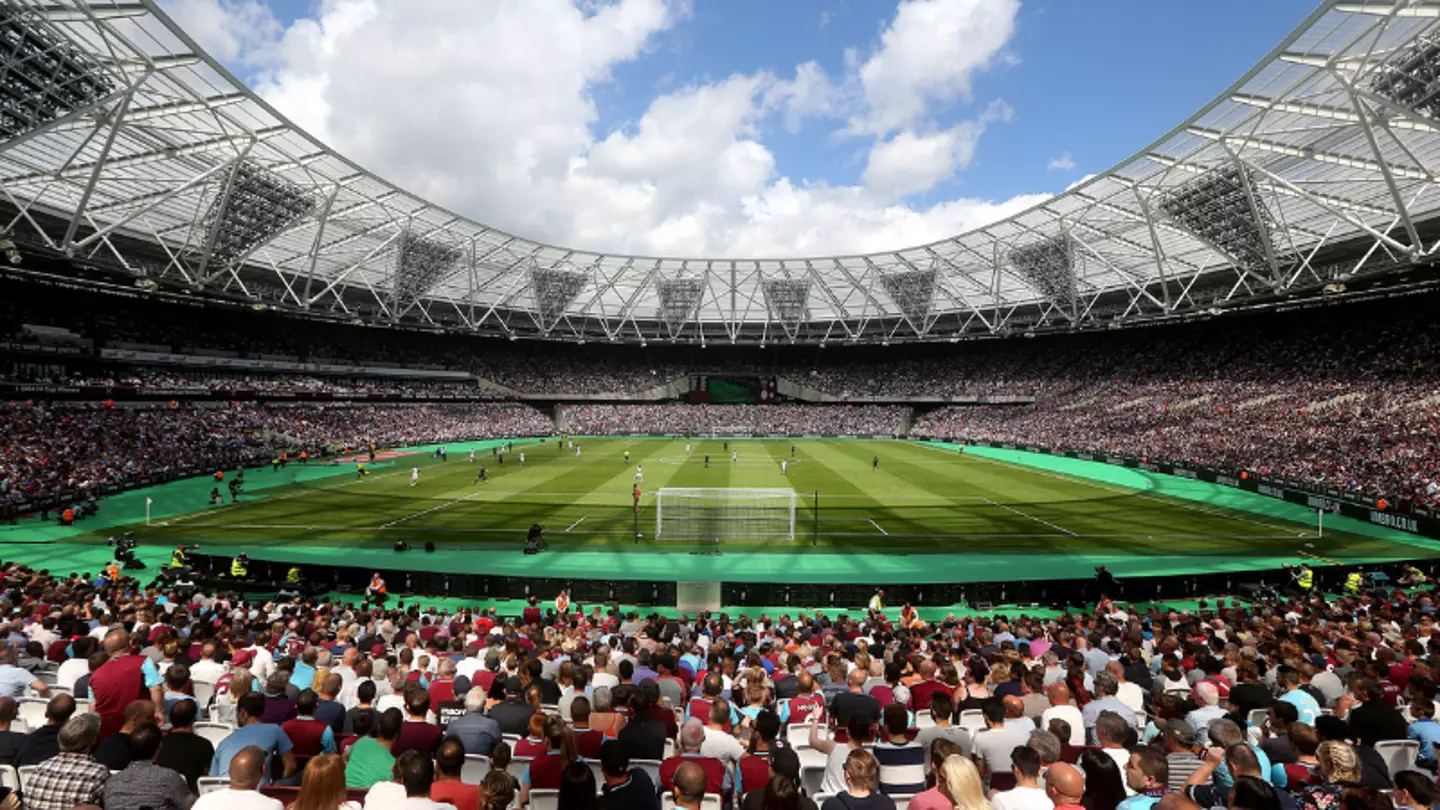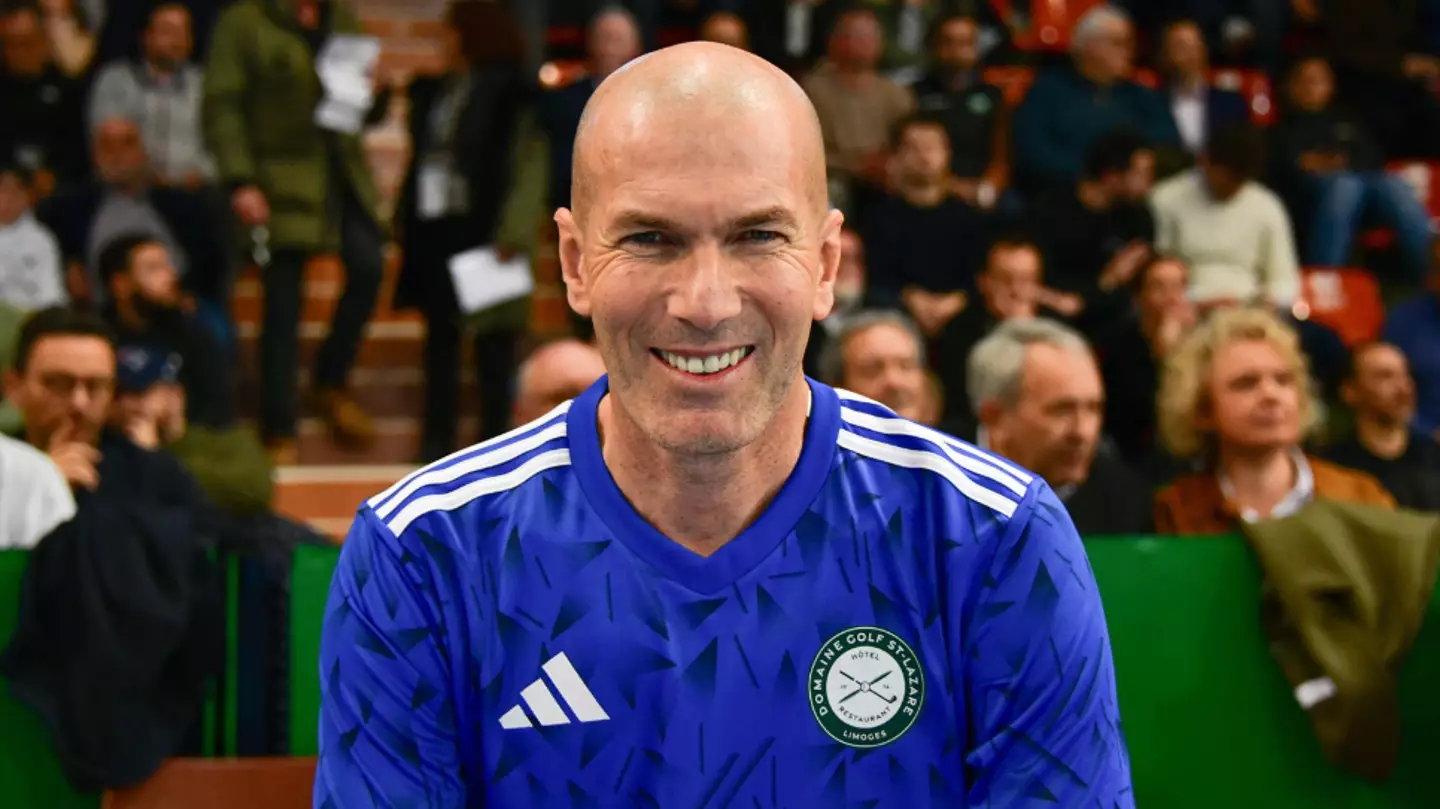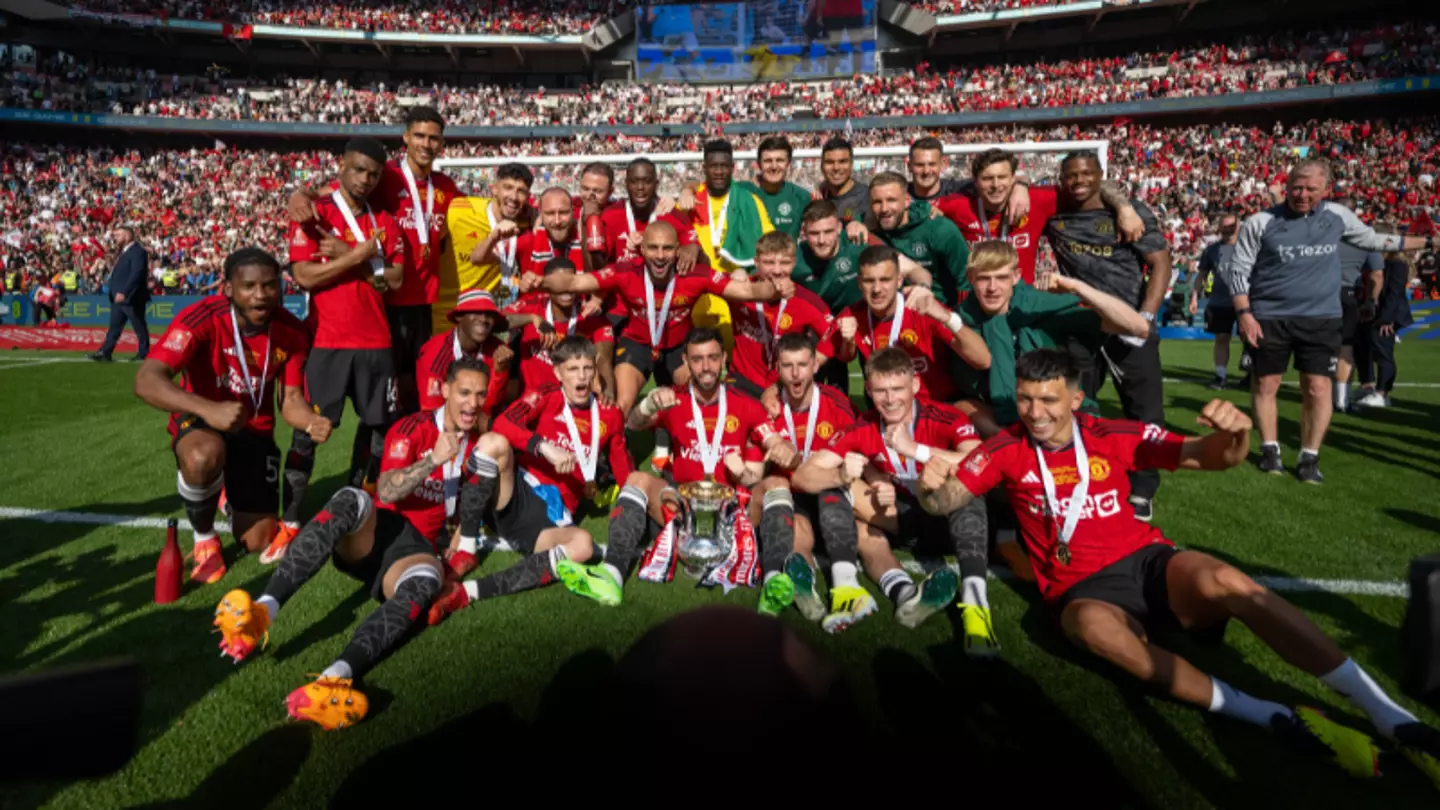The top 12 ‘most notorious firms’ have been ranked.
The top 12 ‘most notorious football firms’ have been named and ranked – with Millwall missing out on top spot.
During the 1960s, British football hooliganism was on the rise, with groups of fans from different teams – known as ‘firms’ – engaging in organised aggressive, violent or disorderly behaviour on matchdays.
Hooliganism reached its peak around the 1990 World Cup, with papers revealing that the then Conservative government under Margaret Thatcher briefly considered withdrawing from the tournament.
England’s run to the semi-finals of that competition was something of a watershed moment towards the reduction in football violence, though incidents would still occur on a semi-regular basis into the turn of the century and there are still occasional incidents today.
London clubs Millwall, West Ham and Chelsea were among those most associated with hooliganism, particularly in the 1970s and 1980s, though violence occurred up and down England, Scotland and Wales.
In 1987, police officer James Bannon spent months inside the Millwall ‘Bushwackers’ firm – posing undercover as a painter and decorator called Jim – as part of a Metropolitan Police operation.
Bannon wrote a book titled ‘Running with the Firm’, in which he detailed his experiences and the relationships he built up with those at the very centre of the Bushwackers firm.
Last February, Lower Block – a website dedicated to football culture over history – ranked the 12 most notorious firms in English football history, with the Bushwackers missing out on top spot.
Luis Suarez reacts to Darwin Nunez scoring the winner for Liverpool vs Nottingham Forest
Here is their list:
Top 12 ‘most notorious football firms’ ranked
- 12. The Naughty Forty (Stoke City)
- 11. The Blades Business Crew (Sheffield United)
- 10. Aberdeen Soccer Casuals (Aberdeen)
- 9. Leeds United Service Crew (Leeds United)
- 8. The Jungle (Celtic)
- 7. Glasgow Rangers Ibrox Boys (Rangers)
- 6. Tottenham Hotspur Yid Army (Tottenham Hotspur)
- 5. Cardiff City Soul Crew (Cardiff City)
- 4. Manchester United Inter-City Jibbers (Manchester United)
- 3. Chelsea Headhunters (Chelsea)
- 2. Millwall Bushwackers (Millwall)
- 1. Inter City Firm (West Ham United)
Featured Image Credit: Getty
Ryan Smart


Journalist who has visited all 92 football league grounds names the five WORST of the lot
The journalist didn’t hold back when assessing the worst grounds in English football.
A top journalist who has visited every football league ground has brutally revealed the five that he would happily never step foot in again.
Every week, hundreds of thousands of people travel to their football team’s home ground to support their side in their latest match.
While some of luckily enough to spend their weekends shouting for a Premier League side playing in a state-of-the-art stadium, others show true commitment by braving the British weather and supporting a team in League Two.
But now, one journalist who has been to every single stadium across the English football leagues has spoken out to reveal the bottom five grounds across the 92.
In a series of articles for the Daily Mail, Oliver Holt will breakdown each of the 92 football stadiums from the English leagues, and in his first article looking at the very bottom of the list he hasn’t held back.
So, here are the five lowest-ranked grounds according to Holt, starting with the best of the worst.
5 – Hillsborough, Sheffield Wednesday
In 88th out of the 92 grounds, Holt listed Hillsborough, as he claimed that the tragic events of the disaster in 1989 that saw 97 Liverpool fans lose their lives casts a shadow over the ground.
He wrote: “It is hard to get past its association with so much death and despair and heartbreak and betrayal of supporters.
“Part of me thinks it should have been demolished and that the club should have moved elsewhere.
“I’ll never feel the same about the stadium as I once did. Visiting it now feels like an intrusion.”
4- London Stadium, West Ham United
West Ham United’s London Stadium have the misfortune of being the only Premier League ground to make it into the bottom five in 89th.
Holt referred to it as ‘a dog’s dinner of a football ground,’ and ‘a monument to much that is wrong with the top flight of the English game.’
He claimed that the old stadium at Upton Park held much more value to fans and that the club’s owners should never have moved.

London Stadium was the only Premier League ground on the list. (Image: Getty)
3- Kassam Stadium, Oxford United
Next on the list was Holt’s local ground, the Kassam Stadium, home to Oxford United.
Detailing his experience there, Holt wrote: “The best experience I’ve had at the Kassam Stadium was getting my Covid jab there during the pandemic.”
As was the case with West Ham, he criticised the decision to move from the club’s previous stadium, but added that the upcoming move to a new stadium in the couple of years time will be a welcome change.
2 – Stadium MK, MK Dons
Perhaps unsurprisingly, Stadium MK found itself in the bottom two of Holt’s list.
Brutally, the Mail journalist wrote: “The stadium fits the club. It is a soulless, faceless, gloomy place. More than that, there is something rather forbidding about it.
“Apart from the joys of the local KFC and McDonald’s, there is little to recommend its immediate surrounds.”

Stadium MK finished second from bottom on Holt’s list. (Image: Getty)
1 – The Den, Millwall
Right at the bottom of the list, Holt put Millwall’s home, The Den, a ground that he admits he has been banned from following Millwall goalkeeper Liam Roberts’ challenge on Crystal Palace’s Jean-Philippe Mateta during the FA Cup.
Holt recalled his experience as a fan 15 years ago as his reasoning for putting The Den right at the bottom, claiming that he felt unsafe at the ground and that he had issues with some of the fans of the club.
Featured Image Credit: Getty
Topics: Football, Millwall, West Ham, Sheffield Wednesday
Ben McCrum


Gazzetta dello Sport named the top 12 unemployed football managers in 2022 and four are still without a job
Thomas Tuchel is among the eight managers on the list to now be in work – but four are currently unemployed.
Gazzetta dello Sport once named the top 12 unemployed football managers – and only eight are now in a job.
In September 2022, the Italian outlet published their list just days after Chelsea decided to sack Thomas Tuchel.
Tuchel had delivered a second Champions League trophy to Stamford Bridge a year earlier, but a poor start to the campaign amid disagreements with the club’s board led to his exit.
The German is now back in a job, of course, with the England men’s national team, having previously been in charge of Bayern Munich following his Chelsea spell.
The second name on Gazzetta’s list was Tuchel’s international managerial compatriot Mauricio Pochettino, who is in charge of the United States men’s national team as they prepare to host the 2026 World Cup.
And ex-Leeds manager Marcelo Bielsa is also likely to be in the States next summer with Uruguay.
Leicester’s Premier League-winning boss Claudio Ranieri, meanwhile, was also unemployed at the time of Gazzetta’s list. He is now in charge of Roma, but will retire from management at the end of the season.
Former Swansea and Leicester boss Paulo Sousa was also named. The ex-Portugal midfielder has had something of a journeyman career, which has seen him manage in Italy, France, Brazil, Hungary, Switzerland and China among others, as well as a spell with the Poland national team.
Sousa is now in charge of Shabab Al Ahli, who play in the United Arab Emirates.
Ole Gunnar Solskjaer, meanwhile, is currently the manager of Turkish Super Lig side Besiktas after a long spell out of the game following his Manchester United sacking in 2022.
And the final two currently employed names on Gazzetta’s list were Quique Setien and Dejan Stankovic, who are in charge of Chinese side Beijing Guoan and Russian side Spartak Moscow respectively.
But what about the other four names?
Rafael Benitez
In September 2022, Rafael Benitez was still out of football after being sacked by Everton in January.
He would subsequently return to management with La Liga side Celta Vigo in June 2023. However, Celta were only two points above the relegation zone in the following March and the Spaniard was sacked for a second time in 18 months.
Joachim Low
After a managerial career that had seen him manage in Germany, Austria and Turkey, Joachim Low replaced Jurgen Klinsmann as Germany manager in 2006 and spent 15 years in the role.
Despite being linked with vacancies at Manchester United and Bayern Munich, Low has not yet returned to football and it remains to be seen whether the 65-year-old has already managed his last match.
Jorge Sampaoli
One of the biggest managerial characters in world football, Jorge Sampaoli has managed 20 teams throughout his career, including spells in charge of Argentina, Chile and Marseille.
Sampaoli was without a club at the time of the list after leaving Marseille, but has since added three teams to his CV.
His most recent club was Ligue 1 side Rennes, where he lasted just two months and 10 matches – winning three of them – before being sacked in January.
Zinedine Zidane
The big question among Zinedine Zidane fans is whether the legendary Frenchman will ever return to management, after two spells at Real Madrid.
The answer is yes – probably.
A third spell at Real doesn’t seem particularly likely – although you never know – but a stint in charge of the France national team certainly does.

Zidane is the favourite to replace Didier Deschamps as France manager in 2026 (Image: Twitter)
Current head coach Didier Deschamps announced his decision to step down from his role after the 2026 World Cup, with Zidane quickly installed as the favourite to replace him.
There aren’t too many other outstanding French candidates to step in – Nice coach Franck Haise could be one, with Lille’s Bruno Genesio perhaps another – so if the French FA do not want to look towards a foreign manager, Zidane will surely be among the major candidates.
Featured Image Credit: Getty
Topics: Zinedine Zidane, Thomas Tuchel, Mauricio Pochettino, Football
Ryan Smart


FourFourTwo ranked the 10 most hated football teams in British football history with controversial team No 1
Manchester United, Arsenal and Liverpool are among the teams ranked as the most hated in British football history.
The 10 most hated football teams in British history were named and ranked, with a controversial side taking the No.1 spot.
Over the years, there have been plenty of ‘hated’ football clubs due to their owners, players, style of play or level of success.
In 2023, Four Four Two plucked out the most loathed teams in the history of British football, factoring in the aforementioned reasons.
10 – Wolves, 1937/38
9 – Stoke City, 2009/10
Stoke, who were under the managerial tutelage of polarising figure Tony Pulis, became an infamous outfit because of their most potent weapon.
Rory Delap’s long throws wreaked havoc. Hated not only because the goals it created were so ‘ugly’ but also because of the ‘rigamarole before each one’.

Stoke City were known for Rory Delay’s long throws during that season. Image: Getty
Delap’s throws were extremely effective and their approach won few admirers, especially after Arsenal‘s Aaron Ramsey had his leg broken by Ryan Shawcross.
8 – Preston North End, 1888/89
Preston won the league in the 1888/89 season, but their greatness was tarnished by corruption.
The team, predominantly made up of Scots, were lured by promises of money and jobs at a cotton mill managed by the club’s secretary/manager William Sudell.
Before their league success, when the game was still officially an amateur game, the FA had kicked Preston out of the FA Cup for paying players.
In 1894, Sudell was jailed after embezzling £5,325 (over half a million quid in today’s money) to give to players.
7 – Arsenal, 1919
Arsenal were elected to a new 22-team First Division despite finishing fifth in Division Two in the 1914/15 season.
Then-chairman Sir Henry Norris had secretly negotiated with (and, it has been alleged, bribed) members of the FA committee.
The Gunners edged out Tottenham in a vote.
6 – Liverpool, 1974-89

Bill Shankly managed Liverpool from 1959 to 1974. Image: Getty
Bill Shankly, Bob Paisley, Joe Fagan and Kenny Dalglish managed Liverpool during a hugely successful spell.
Liverpool were known for a team of hard men such as Ron Yeats, Tommy Smith, Joey Jones, Jimmy Case, Graeme Souness and Steve McMahon.
Four Four Two writes: “Nor were the fans popular, spawning many of the stereotypes which linger to this day. That they were so frequently celebrating victory only strengthened the hatred that reached a controversial peak after the Heysel disaster caused all English clubs to be banned from Europe for half a decade, ending the country’s unprecedented hegemony over continental competition (seven European Cups in eight seasons, 1977-84).”
5 – Millwall, 1985-present
4 – Wimbledon, 1987/88
Wimbledon’s notorious team were known as the ‘Crazy Gang’ that featured the likes of Vinnie Jones, John Fashanu and Lawrie Sanchez.
They cut the heating and blocked the toilets in the visitors’ dressing room and beat the sh*t out of each other to settle internal scores.
3 – Manchester United, 1998/99
Skippered by Roy Keane, who divided opinion, and managed by Sir Alex Ferguson, Man United‘s treble-winning side is still in the conversation for the greatest British football team in history. But they were hated as much as they were adored.
Their come-from-behind Champions League triumph over Bayern Munich in Barcelona secured the Red Devils’ third trophy that season, having won the Premier League and the FA Cup.

Manchester United celebrate winning the Champions League. Image: Getty
2 – MK Dons, 2004/05
“MK Dons claimed Wimbledon’s history and league position as their own. How fitting that this synthetic club moved to Milton Keynes, a new town where concrete cows were once erected to create atmosphere,” writes Four Four Two.
1 – Leeds United, 1973/74
Leeds takes top spot, with Don Revie’s title-winning 1973/74 side.
It was his second league title, with George Best describing them as a ‘bloody nightmare’.
Four Four Two highlighted Billy Bremner as their ‘chief villain’, with The Sunday Times dubbing the Scot ’10 stone of barbed wire’, which paints its own picture.
Featured Image Credit: Getty
Topics: Leeds United, Manchester United, Football, Liverpool, Arsenal, Millwall
Nasir Jabbar
.png)
.png)
Top 10 most valuable wonderkids at Euro 2024 named and ranked
Transfermarkt have listed the most valuable wonderkids at Euro 2024.
The top 10 most valuable wonderkids at Euro 2024 have been named and ranked.
Euro 2024 is just a day away from commencing as Germany vs. Scotland kicks off the tournament on Friday.
Spain, Italy, England and the Netherlands are also in action this weekend as some of the best young talent in the tournament are on show.
Ahead of the event kicking off, Transfermarkt have listed the best wonderkids at Euro 2024.
They’ve named and ranked the best starlets aged 19 and younger, featuring some of the best talent in world football.
Slovakia’s Leo Sauer, who plays for Feyenoord, is ranked 10th ahead of Poland’s Kacper Urbanski and Turkey’s Semih Kilicsoy.
Midfielder Arthur Vermeeren, who plays for Atletico Madrid and Belgium, and Real Madrid ace Ardu Guller are ranked seventh and sixth respectively.
England’s Kobbie Mainoo enters the list in at five, having excelled at Manchester United last season. He has a value of €30 miillion.

Kobbie Mainoo in England training. Image: Getty
A third Turkish representative in Kenan Yildiz is ranked fourth while Man United and Liverpool target Joao Neves, who has a value of €55 million, is ranked third.
Paris Saint-Germain and France starlet Warren Zaire-Emery is ranked second with a value of €60 million while Barcelona and Spain phenom Lamine Yamal is the most valuable wonderkid at Euro 2024, with a value of €90 million.
The top 10 most valuable wonderkids at Euro 2024:
- Lamine Yamal (Spain) – €90m
- Warren Zaire-Emery (France) – €60m
- Joao Neves (Portugal) – €30m
- Kenan Yildiz (Turkey) – €30m
- Kobbie Mainoo (England) – €30m
- Arda Guler (Turkey) – €30m
- Arthur Vermeeren (Belgium) – €25m
- Semih Kilicsoy (Turkey) – €12m
- Kacper Urbanski (Poland) – €7m
- Leo Sauer (Slovakia) – €5m





